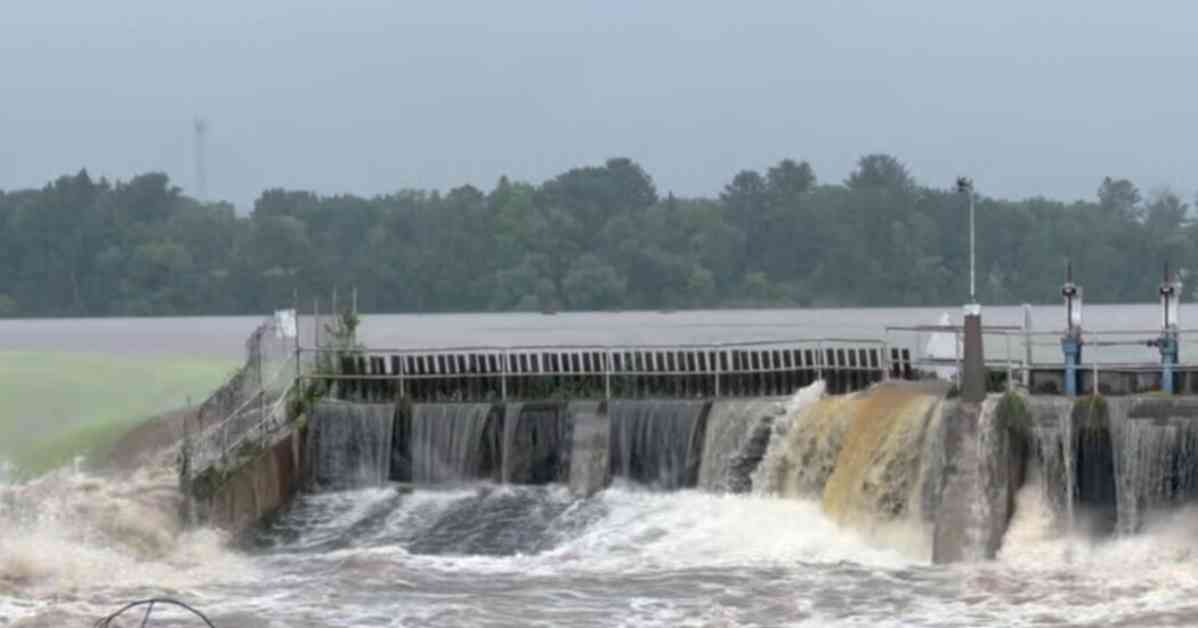Emergency officials in Manawa, Wisconsin, were busy rescuing residents who were stranded on flooded roads due to a river overflowing from heavy rainstorm. The situation became critical when the Little Wolf River began overpowering the Manawa Dam around 12:30 p.m. local time on Friday.
According to meteorologist Kurt Kotenberg from the National Weather Service in Green Bay, the area near the dam received more than five inches of rain in just four hours on Friday morning, leading to the dam being unable to contain the rising water levels. Emergency officials had to rescue drivers who were stuck on flooded roads, with some people even standing on the hoods of their cars waiting to be rescued.
Fortunately, as of Friday afternoon, there were no reports of any deaths or injuries resulting from the flooding. However, the situation highlighted the vulnerability of dams in the Midwest, especially after the recent near failure of the Rapidan Dam in southern Minnesota.
Manawa, a small city with a population of around 1,400 people, is located about 50 miles west of Green Bay. The Manawa Dam, situated on the northern side of the city near the Manawa Mill Pond, was under scrutiny to determine if it had sustained any damage or cracks due to the overwhelming water flow.
Residents in Manawa were advised by the Weather Service to seek higher ground if possible, while sheltering in place and avoiding flooded roads. The Waupaca County Sheriff’s Office was actively involved in rescuing vulnerable individuals in the city and urged residents to stay away from the affected areas.
Moreover, officials cautioned residents to boil tap water before consuming it, as the water might be contaminated due to the flooding. This precautionary measure was put in place to ensure the safety and well-being of the residents in the wake of the natural disaster.
The flooding incident in Manawa serves as a reminder of the unpredictable nature of weather patterns and the importance of being prepared for such emergencies. As communities come together to support and assist each other during these challenging times, it is crucial to prioritize safety and follow the guidelines provided by local authorities to mitigate the risks associated with natural disasters.




